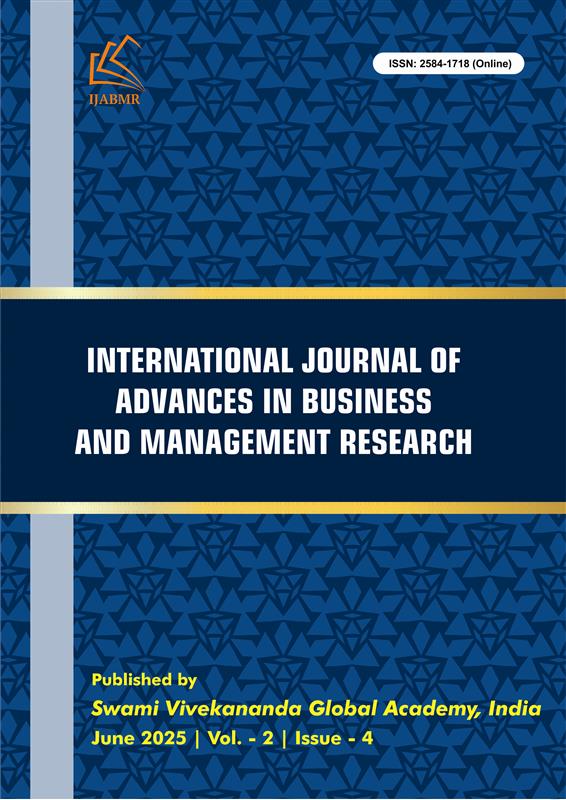Abstract
This current study investigates the key causes that have been driving the green bond market over the past several years, as well as the constraints that prohibit emerging nations from accessing this market. A greater awareness of climate change among investors appears to be supporting the development of green bonds, which appear to be a reality in both developed and developing nations. It also indicates that climate bonds are becoming more prevalent in the financial market. On the other hand, the market in developing countries is still in its early phases, and it appears that its full potential is not being fully appreciated. The key difficulties inhibiting the growth of green bonds in developing nations include the lack of appropriate institutional structures for managing climate bonds, the issue of minimum size requirements, and the high transaction costs associated with issuing these bonds. These difficulties are preventing the growth of climate bonds in developing countries. Overall, the current study focuses on specifying investment strategies for climate bonds that are essential for NICs. The study focusses on establishing a relationship among climate bonds and the economic growth of NICs, using data from 2014 to 2023, with respect to the Great British Pound (GBP), Euro (EUR), Chinese Yuan (CNY), and Japanese Yen (JPY). The integration of the data resulted in a model analysis using the Panel Auto Regressive Distributed Lag (PARDL), which ultimately demonstrates that EUR- and CNY-issued climate bonds have the most significant impact on developing economies. This will ultimately help a country to concentrate on sustainable economic development built on the climate finance bonds, giving priority in these two currencies. Furthermore, it will ultimately reduce the need for unnecessary foreign aid – an external burden for growing economies.
References
- Jones R, Baker T, Huet K, Murphy L, Lewis N. Treating ecological deficit with debt: The practical and political concerns with green bonds. Geoforum. 2020 Aug 1;114:49-58. https://doi.org/10.1016/j.geoforum.2020.05.014
- Tolliver C, Keeley AR, Managi S. Policy targets behind green bonds for renewable energy: do climate commitments matter?. Technological Forecasting and Social Change. 2020 Aug 1;157:120051. https://doi.org/10.1016/j.techfore.2020.120051
- Heller TC, Shukla PR. Development and climate: Engaging developing countries. Beyond Kyoto: Advancing the international effort against climate change. 2003 Jul:111-40.
- Millner A, Dietz S. Adaptation to climate change and economic growth in developing countries. Environment and Development Economics. 2015 Jun;20(3):380-406. https://doi.org/10.1017/S1355770X14000692
- Flaherty M, Gevorkyan A, Radpour S, Semmler W. Financing climate policies through climate bonds–A three stage model and empirics. Research in International Business and Finance. 2017 Dec 1;42:468-79. https://doi.org/10.1016/j.ribaf.2016.06.001
- Dutta A, Bouri E, Noor MH. Climate bond, stock, gold, and oil markets: Dynamic correlations and hedging analyses during the COVID-19 outbreak. Resources Policy. 2021 Dec 1;74:102265. https://doi.org/10.1016/j.resourpol.2021.102265
- Perry KK. The new ‘bond-age’, climate crisis and the case for climate reparations: Unpicking old/new colonialities of finance for development within the SDGs. Geoforum. 2021 Nov 1;126:361-71. https://doi.org/10.1016/j.geoforum.2021.09.003
- Stiglitz JE. Globalization and growth in emerging markets and the new economy. Journal of policy modeling. 2003 Jul 1;25(5):505-24. https://doi.org/10.1016/S0161-8938(03)00043-7
- Puaschunder JM. Financing climate justice through climate bonds. Oxford Journal on Finance and Risk Perspectives. 2017 Oct 10;6(3):1-0. https://doi.org/10.2139/ssrn.2850697
- Cortellini G, Panetta IC. Green bond: A systematic literature review for future research agendas. Journal of Risk and Financial Management. 2021 Dec 7;14(12):589. https://doi.org/10.3390/jrfm14120589
- Bhandary RR, Gallagher KS, Zhang F. Climate finance policy in practice: A review of the evidence. Climate Policy. 2021 Apr 21;21(4):529-45. https://doi.org/10.1080/14693062.2020.1871313
- Rose P. Certifying the ‘climate’in climate bonds. Capital Markets Law Journal. 2019 Jan 1;14(1):59-77. https://doi.org/10.1093/cmlj/kmy032
- Destek MA, Sinha A. Renewable, non-renewable energy consumption, economic growth, trade openness and ecological footprint: Evidence from organisation for economic Co-operation and development countries. Journal of cleaner production. 2020 Jan 1;242:118537. https://doi.org/10.1016/j.jclepro.2019.118537
- Fatica S, Panzica R, Rancan M. The pricing of green bonds: are financial institutions special?. Journal of Financial Stability. 2021 Jun 1;54:100873. https://doi.org/10.1016/j.jfs.2021.100873
- Reboredo JC. Green bond and financial markets: Co-movement, diversification and price spillover effects. Energy Economics. 2018 Aug 1;74:38-50. https://doi.org/10.1016/j.eneco.2018.05.030
- Reboredo JC, Ugolini A. Price connectedness between green bond and financial markets. Economic Modelling. 2020 Jun 1;88:25-38. https://doi.org/10.1016/j.econmod.2019.09.004
- de Deus JL, Crocco M, Silva FF. The green transition in emerging economies: green bond issuance in Brazil and China. Climate Policy. 2022 Nov 26;22(9-10):1252-65. https://doi.org/10.1080/14693062.2022.2116381
- Banga J. The green bond market: a potential source of climate finance for developing countries. Journal of Sustainable Finance & Investment. 2019 Jan 2;9(1):17-32. https://doi.org/10.1080/20430795.2018.1498617
- Dafermos Y, Nikolaidi M, Galanis G. Climate change, financial stability and monetary policy. Ecological Economics. 2018 Oct 1;152:219-34. https://doi.org/10.1016/j.ecolecon.2018.05.011
- Abbass K, Qasim MZ, Song H, Murshed M, Mahmood H, Younis I. A review of the global climate change impacts, adaptation, and sustainable mitigation measures. Environmental science and pollution research. 2022 Jun;29(28):42539-59. https://doi.org/10.1007/s11356-022-19718-6
- Hong H, Karolyi GA, Scheinkman JA. Climate finance. The Review of Financial Studies. 2020 Mar 1;33(3):1011-23. https://doi.org/10.1093/rfs/hhz146
- Abudu H, Wesseh Jr PK, Lin B. Climate bonds toward achieving net zero emissions and carbon neutrality: evidence from machine learning technique. Journal of Management Science and Engineering. 2024 Mar 1;9(1):1-5. https://doi.org/10.1016/j.jmse.2023.10.001
- Tolliver C, Keeley AR, Managi S. Drivers of green bond market growth: The importance of Nationally Determined Contributions to the Paris Agreement and implications for sustainability. Journal of cleaner production. 2020 Jan 20;244:118643. https://doi.org/10.1016/j.jclepro.2019.118643
- Clapp C, Pillay K. Green bonds and climate finance. InClimate finance: Theory and practice 2017 (pp. 79-105). https://doi.org/10.1142/9789814641814_0005
- Neumann M. The political economy of green bonds in emerging markets: South Africa's faltering transition. Palgrave Macmillan; 2023 May 17. https://doi.org/10.1007/978-3-031-30502-3















